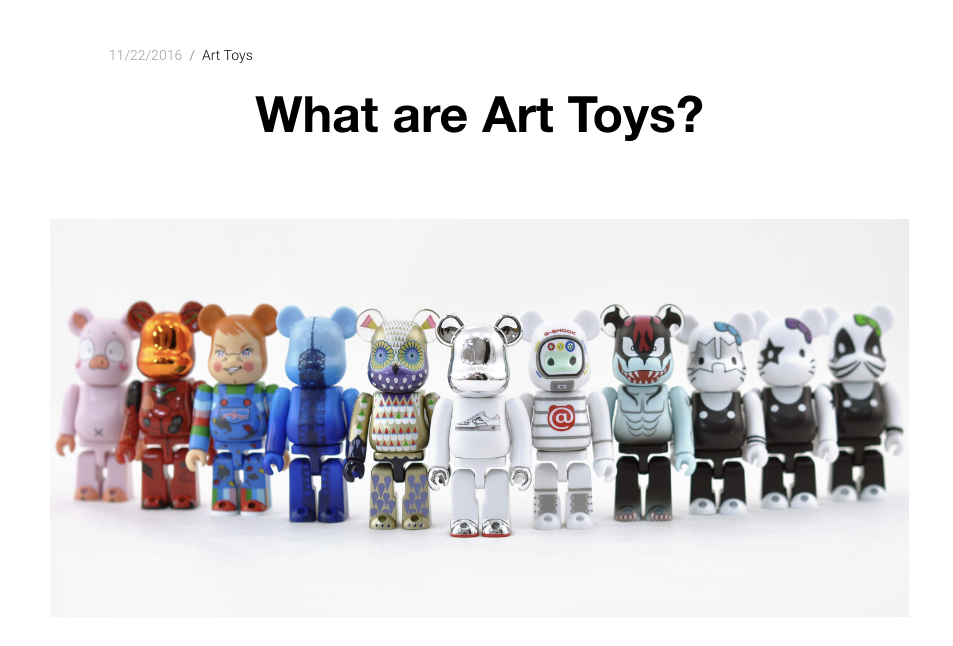Origins of the Art toys
|
Origins of the Art toys (or designer toys) Designer toys first appeared in Japan in the 1990s, at the same time than mass toy production was moving from Japan to China. This toys are normally made from resin or vinyl but can be made from other materials too. In recent years many art toys have been given the status of art and have been shown in leading galleries, such as MOMA in NYC.
Let’s start reading about Art Toys, here. If there is anything you find interesting, save it, since we will be analysing a couple later. This low budget video has lots of interesting information, too: Let’s have a look at the origins of these toys: Kaiju Kaiju is a genre of film in Japan starring monsters. It is thought to have started with the 1954 Godzilla film, but many others are also Kaiju including Mothra and King Ghidorah. Here are some examples of Kaiju figures:
Sofubi In Japan there are the Sofubi toys. It means “soft vinyl”. There toys were traditionally made by scultpting a small model, from which a metal mould is made. The soft vinyl toy is then cast in the mould.
This was a very popular method of manufacturing toys until quicker, cheaper, more reliable methods were developed and this type of toy production stopped. Kinjeshi Kinjeshi were collectable toy erasers that launched in Japan in 1983. The original ones were wrestlers and cars. Each series had well over 100 designs, which made people want to collect them all. They usually came in blister packs with four erasers in each box.
Now there are many adaptations of the original Kinjeshi. Gashapon Gashapon are toy vending machines that are popular in Japan and South East Asia. They were inspired by gunball machines, invented in the USA, but they dispense toys, usually in small capsules.
You can look at different toys here: The Toy Art Gallery website
(Adapted from MYP Design, but Lenny Dutton.) |






